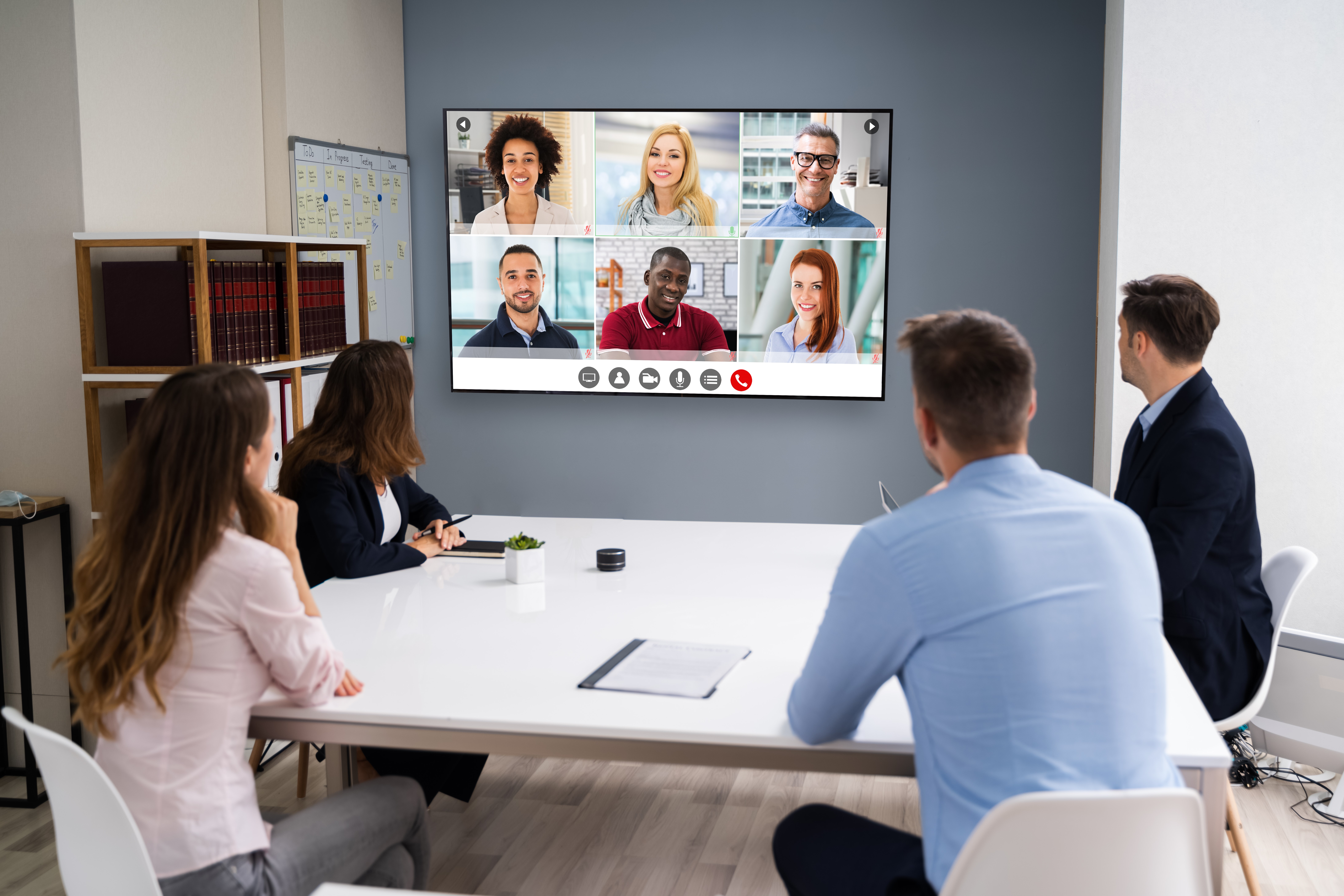Early in 2020, enterprises had to quickly transform – often within days – from a mostly-centralized, in-person workforce to hybrid workforce collaboration, due to COVID-19. As a result, many businesses rushed to implement video conferencing tools on the fly, assuming everyone would be back in the office in short order. Today, approximately 32% of all employees worldwide are still working remotely.1 Over time, these hastily implemented conferencing platforms often proved to lack the capacity, security, and functionality needed, especially for enterprises with more complex communication requirements.
Consider the Zoom story. As global lockdowns became compulsory, a vast number of enterprises turned to this application for video and voice collaboration. The company reported that in April 2020, Zoom peaked at over 300 million daily meeting participants, up from 10 million in December 2019.2 Then, cracks in the armor appeared such as uninvited people crashing meetings and other security concerns. Zoom’s meteoric rise to prominence placed a spotlight on performance difficulties that nearly brought them to their knees.

Preparing for a Long-Term Remote Work Strategy
While it’s good to understand how we got here, businesses need to know if remote work will have a lasting impact. According to Upwork, 73% of organizations still plan to have remote workers by 2028, and Gartner reports that 74% of companies plan to shift some of their employees to remote working permanently.3 Industry-wide research agrees that a hybrid workforce is here to stay for the foreseeable future, with many employees working in the office some days and at home others. Now it’s time to pause and re-evaluate the capabilities of existing voice and video conferencing solutions and identify areas that need improvement.
Reimagining Your Conferencing and Hybrid Workforce Collaboration Capabilities
Many enterprises are already reassessing multimedia communications and reworking systems to support a virtualized, anywhere work strategy going forward. Consider the following five key areas to aid your successful transition to an updated strategy:
- Plan Big: Don’t limit your possibilities. Large enterprises and government agencies need to be able to scale cost-effectively and communicate with live video streams to vast audiences – consisting of thousands of people rather than dozens or hundreds. That way all your employees’ and partners’ hybrid workforce collaboration method is successful, and you can serve all your sales prospects and customers effectively.
- Stop Problems Before They Start: To engage your audiences efficiently, make sure your video conferencing and multimedia collaboration tools provide exceptional reliability and availability. Virtualized software-based transcoding, local and geographic redundancy, fail-over for uninterrupted voice and video, load balancing, a comprehensive array of codecs, and a user-friendly management interface are a sampling of many capabilities your platform should offer to ensure unmatched performance.
- Demand Robust Security: Media processing applications have unique security requirements. For example, financial meetings with critical stakeholders to evaluate monetary portfolios demand ultra-secure sessions, as do any enterprises that handle proprietary, personal, and trust data, such as insurance companies and brokerage houses. Be sure to pay special attention to features such as real-time transport protocol (RTP) support to secure streaming audio and video, secure recording and storage of voice and video sessions, support for Restful API user password security and HTTP client authentication, and an encrypted repository to securely store sensitive data such as passwords, certificates, and account credentials.
- Insist on Mission-Critical Performance: Enterprise videoconferencing and media collaboration depend on consistent uptime for efficient workforce operations. For example, enhanced e911 services depend on Public Safety Answering Points (PSAPs) to provide critical originating and transmitting call data. Multimedia capabilities for virtual doctor-patient consultations allow the review and discussion of MRIs, X-rays, CT scans, and medications in real-time. High availability, low latency, automatic failover, and efficient bandwidth utilization may not be essential capabilities for all enterprises, yet they are absolute must-haves and vital to the high-performance requirements of any mission-critical, multimedia applications.
- Move to the Modern Workplace: According to the Gensler US Workplace Survey,iv employees want an environment that promotes collaboration, supports employee well-being and fosters knowledge sharing and best practices. Offering a shared whiteboard or video can allow employees in different time zones to share their ideas. In remote workforces where employees rarely meet face-to-face, multimedia conferencing allows them to see each other and build comradery. Virtual reality and augmented reality will be game-changers to reinforce collaboration efforts. More immersive online multimedia communications, virtual spaces for creative teams to collaborate in 3D, and cloud-based communications make remote teams feel more connected and help ensure the success of modern hybrid workforce collaboration.

Creating Your “New Norm”
So, what are your options? Enghouse Vidyo’s PowerMedia® XMS media server software is designed for complex, rich media applications. The platform enables businesses to enhance collaboration and improve productivity across the organization.
Regardless of the new or improved media processing applications you require, the question will likely be, “Should we develop in-house or outsource development?” Often that decision is based on application urgency, internal resources available, and budgetary constraints. PowerMedia’s capabilities and affordability make either option viable. However, our pre-built APIs can help you quickly and efficiently develop in-house. And, because more than 15,000 enterprises and 250 service providers use the software today, you can advance your digital conferencing and collaboration transformation with complete confidence.
With PowerMedia, you no longer have to be held hostage by platforms that don’t meet the needs of your “new norm” post-Covid.
